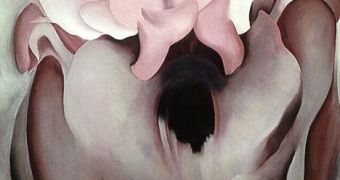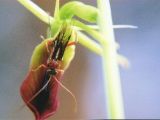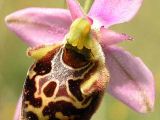Sex toys may be made not only of plastic; and only by humans. Nature has got its own. For humans, many flowers have an erotic symbolism, like the rose in the Western World (and this, since the ancient Greeks and Romans, who identified the rose with their goddesses of love - Aphrodite, respectively Venus), but also the red chrysanthemums, tulips, carnations, daisies, calla, lilac, gardenias and violets. In China, India, and other countries, hibiscus is the flower of love. In the East and Africa, the lotus represents creation, fecundity and the woman. But some male wasps really make flowers the objects of their passion. And not any flowers, but orchids. The right orchid can even make a male orchid dupe wasp (Lissopimpla excelsa) ejaculate on the petals, as showed by a new research published in the journal "American Naturalist."
"Many insects mistake flowers for femmes, but few go as far as these wasps. It's just so hard [for the wasps] to resist. But the wasp's attraction to flowers might complicate its efforts to mate with genuine females," lead researcher Anne Gaskett, a biologist at Macquarie University in Sydney, Australia.
The most known tricksters of the orchid family are the bee orchids from the genus Ophrys, inhabiting southern Europe and the Mediterranean area. These orchids do not have attractive nectar, so they fool the drones by mimicking the look and scent of a bee queen. The drones will attempt to mate with the bee orchids but before they become aware of the mistake, the orchid has already deposited a pollen package on their body. The drone flies off and, when he gets fooled again, he delivers the pollen to another orchid. After a few deceptions, the drone understands the trick, but he may have already pollinated several orchids. Each species of Ophrys orchid has its own pattern and smell, and also imitates wasps and bumble bees.
This new research was made on two species of Australian tongue orchids (Cryptostylis). While most insects merely touch down on the flowers, the dupe wasps were observed spending a lot of time around tongue orchids, leaving in many cases a visible blob on the flower before taking off. "We decided to check if they were wasting their sperm on the flowers," Gaskett told New Scientist.
The microscope revealed the blobs contained sperm cells. Further field research revealed that on first visiting a tongue orchid, about 70% of the male wasps ejaculated on the flower. After several visits, most insects ceased copulating with the orchid.
"They are perhaps not really educated about what a real female looks like, and they make a bad decision. The orchids that caused the most extreme behavior - pollination with ejaculation - have the highest pollination rate of any known sexually deceptive orchid. I think ejaculation is just a side effect of having an extremely compelling orchid," added Gaskett.
But this peculiar behavior appears not to impact the biology of the wasp populations, due to the reproductive behavior of the wasps: the females can breed asexually (via parthenogenesis "virgin birth") producing only males, while sexual reproduction produces just females.
"If you are the female and you miss out on mating because your male is out with an orchid, you can still reproduce. The real winners are the orchids. By duping male wasps into ignoring females who in turn breed more males, tongue orchids ensure their legacy," hypothesized Gaskett.
"A simple test would be to see if populations of orchid stud wasps have more males than a related species that is not attracted to flowers," said Florian Schiestl, an orchid expert at the University of Zurich, Switzerland.
This is not the only Australian orchid fooling wasps. Another Australian orchid species has various hairs that make them look like a caterpillar. Attracted by the "prey", wasps sting it for laying their eggs and when they fly off, they already got a pollen load.

 14 DAY TRIAL //
14 DAY TRIAL // 

